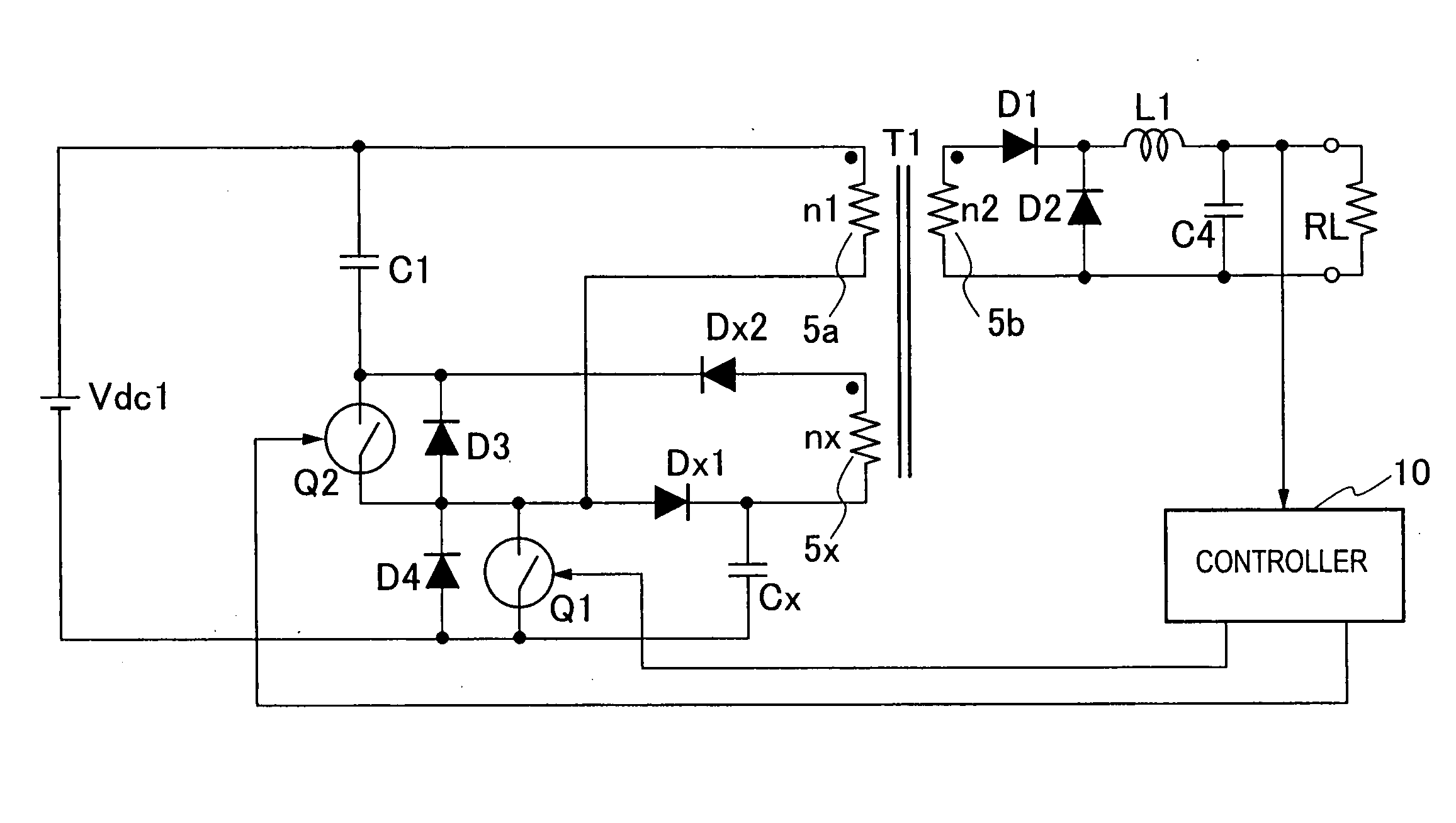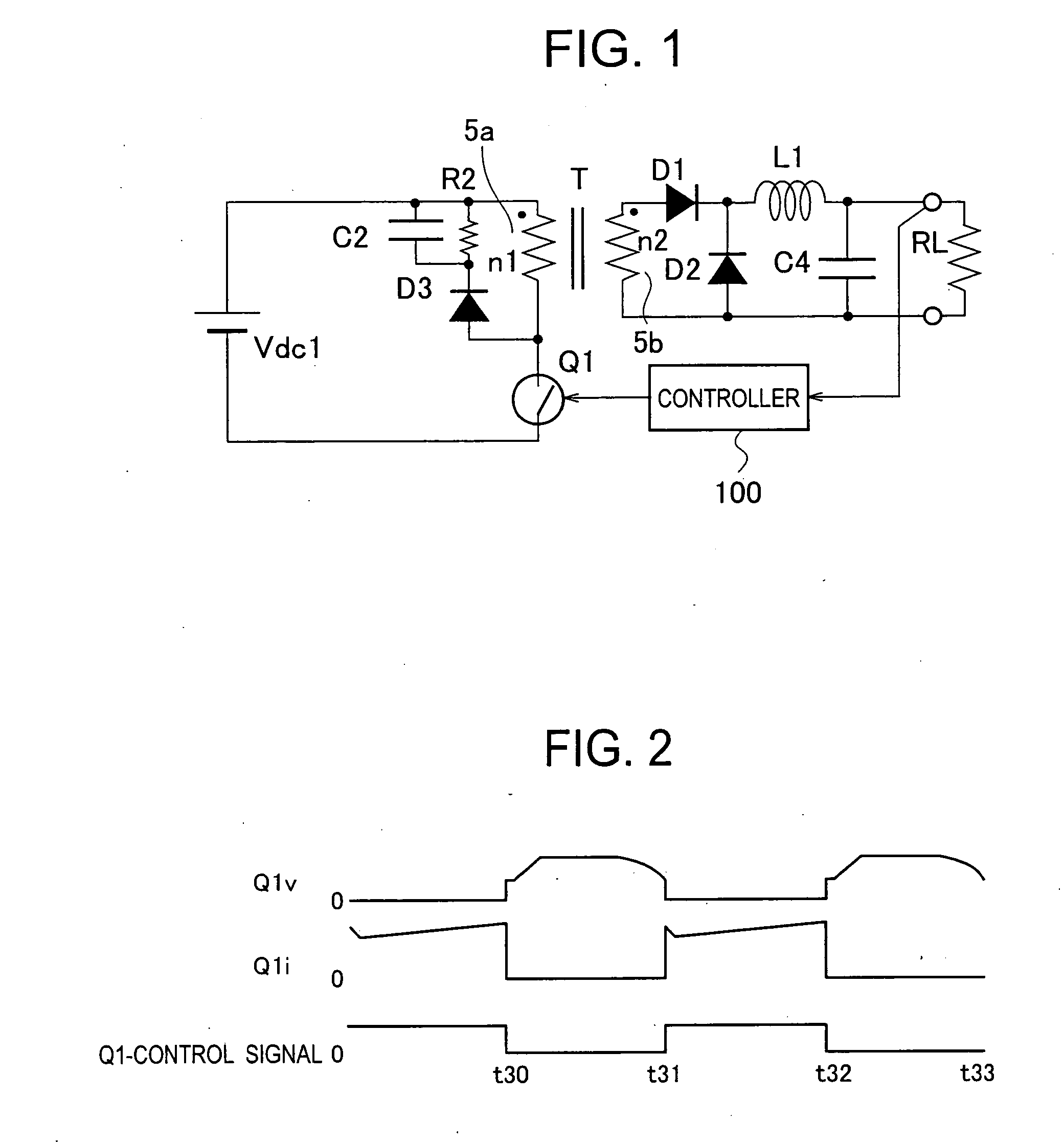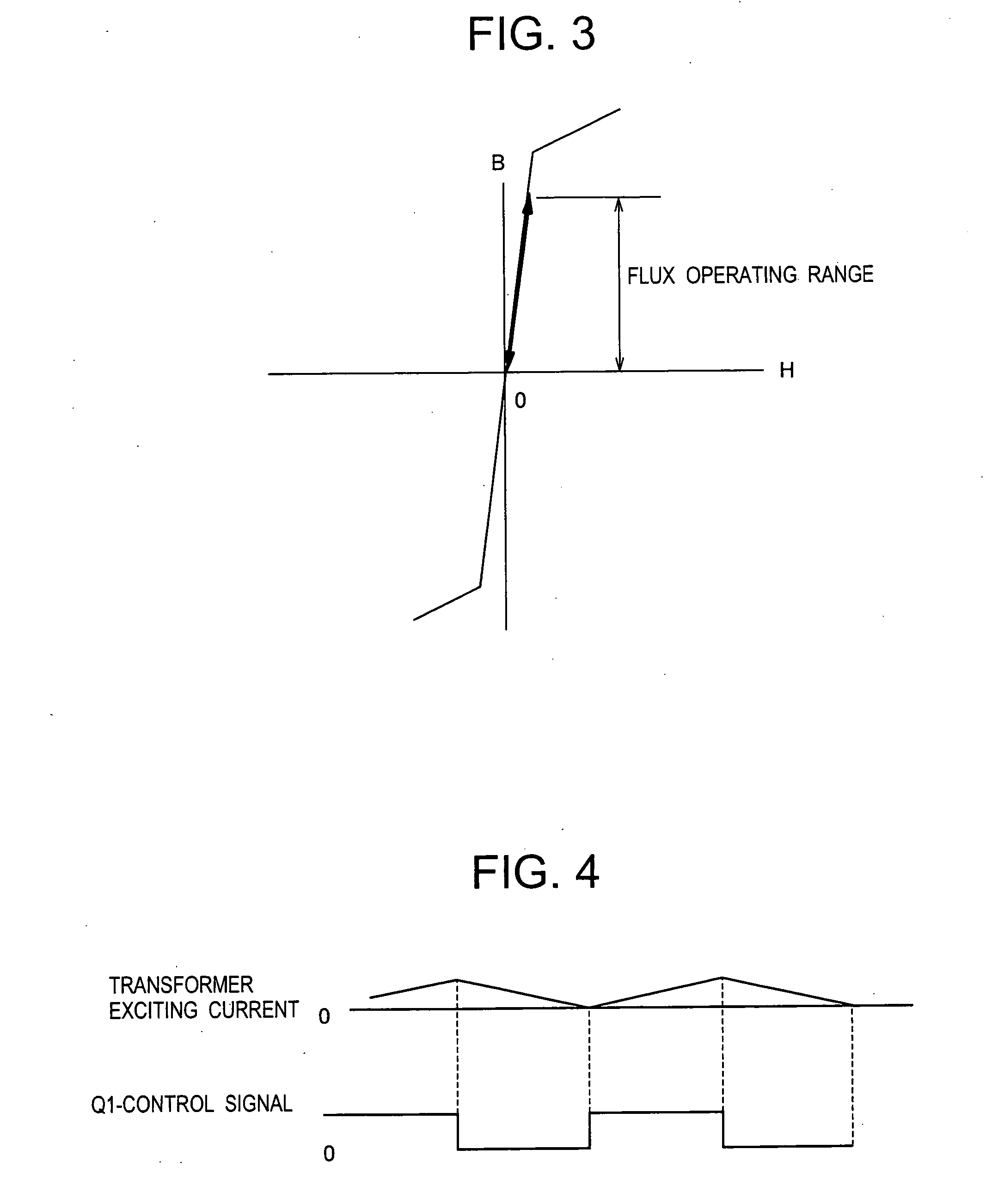Switching power supply apparatus
a technology of switching power supply and power supply core, which is applied in the direction of electric variable regulation, process and machine control, instruments, etc., can solve the problems of increasing the loss of efficiency, increasing and reducing the rate of use of the core of the transformer t, so as to reduce the noise and size of the switching power supply apparatus, improve the rate of use of magnetic flux, and reduce the size of the transformer
- Summary
- Abstract
- Description
- Claims
- Application Information
AI Technical Summary
Benefits of technology
Problems solved by technology
Method used
Image
Examples
first embodiment
[0046] A switching power source apparatus according to the first embodiment arranges an auxiliary winding for a transformer. When a main switch is turned on, a snubber capacitor connected through a diode is discharged through the auxiliary winding to a clamp capacitor. When the main switch is turned off, the snubber capacitor is charged to make the inclination of a voltage increase gentle at the time when the main switch is turned off. At the same time, an auxiliary switch connected in series with the clamp capacitor is turned on, to bias magnetic flux of the transformer toward a minus side to expand the range of change of magnetic flux and the auxiliary switch is turned off to make the main switch conduct zero-voltage switching (ZVS) when an exciting current increases. In this way, this embodiment establishes ZVS, improves efficiency, decreases noise, and reduces the size of the transformer.
[0047]FIG. 5 is a circuit diagram showing the switching power source apparatus according to...
second embodiment
[0071] Next, a switching power source apparatus according to the second embodiment of the present invention will be explained. FIG. 13 is a circuit diagram showing the switching power source apparatus according to the second embodiment. The switching power source apparatus of the second embodiment of FIG. 13 differs from the switching power source apparatus of the first embodiment of FIG. 5 in a circuit on the secondary side of a transformer T2, and therefore, only this part will be explained.
[0072] The transformer T2 has a primary winding 5a (the number of turns of n1), a secondary winding 5b (the number of turns of n2), and a tertiary winding 5c (the number of turns of n3).
[0073] Each end of a series circuit consisting of the secondary winding 5b and tertiary winding 5c of the transformer T2 is connected to a series circuit consisting of a diode D6 and a capacitor C4. A node between the secondary winding 5b and the tertiary winding 5c and a node between the diode D6 and the capa...
third embodiment
[0083] Next, a switching power source apparatus according to the third embodiment of the present invention will be explained. FIG. 15 is a circuit diagram showing the switching power source apparatus according to the third embodiment. The switching power source apparatus of the third embodiment of FIG. 15 differs from the switching power source apparatus of the first embodiment of FIG. 5 in a circuit on the secondary side of a transformer T3, and therefore, only this part will be explained.
[0084] A core of the transformer T3 is wound with a primary winding 5a and a secondary winding 5b (the number of turns of n2) that is of an opposite phase relative to the phase of the primary winding 5a. A first end of the secondary winding 5b is connected to an anode of a diode D1. A cathode of the diode D1 and a second end of the secondary winding 5b are connected to a capacitor C4. The diode D1 and capacitor C4 form a rectifying-smoothing circuit. The capacitor C4 smoothes a rectified voltage ...
PUM
 Login to View More
Login to View More Abstract
Description
Claims
Application Information
 Login to View More
Login to View More - R&D
- Intellectual Property
- Life Sciences
- Materials
- Tech Scout
- Unparalleled Data Quality
- Higher Quality Content
- 60% Fewer Hallucinations
Browse by: Latest US Patents, China's latest patents, Technical Efficacy Thesaurus, Application Domain, Technology Topic, Popular Technical Reports.
© 2025 PatSnap. All rights reserved.Legal|Privacy policy|Modern Slavery Act Transparency Statement|Sitemap|About US| Contact US: help@patsnap.com



